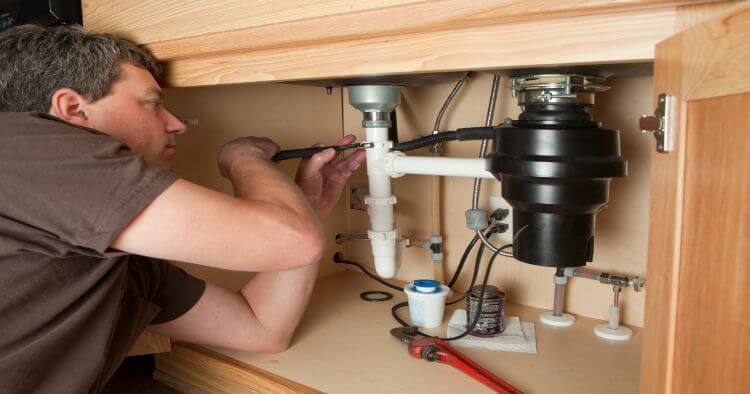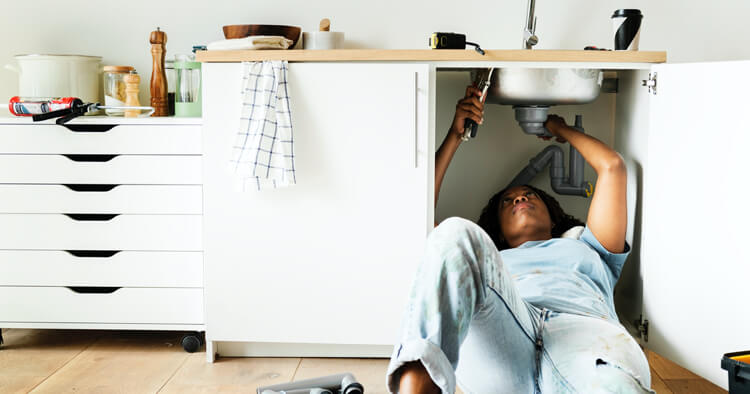How to Clean a Washing Machine
While your washing machine keeps clothes looking and smelling their best, the appliance can develop some strong odors over time. Between the grungy clothes that you send through it to the detergents and fabric softeners that you use, those odors can make you hate entering your laundry room. Luckily for you, you can learn a how to clean washing machines and get yours clean again.
Safety first, though: Always put down some towels or old clothing near the base of the washing machine and around it. Not only will this keep the water from damaging your floors, but it will also prevent slips and falls.
Why Does My Washer Smell?
Your washing machine may develop odors because of the cleaning products that you use as well as the fibers that come off your clothing and bed linens. Dirt and hair can add to those odors as can the oils that come off your body and stick to your clothing. Odors also stick to the washer because germs and bacteria grow in moist environments. Regular cleaning will eliminate those musty odors and other smells.
What Is the Best Way to Clean a Washing Machine?
Learning how to drain a washer is your first step because you need to remove the excess water. If your washer dies in the middle of a load, this is the first step that you'll take. No matter what type of washer you have, always turn it off first and unplug it from the wall. You can also use duct or electrical tape to secure the cord to the appliance and keep it out of the water.
You will then want to pull the washer away from the wall and locate the three hoses on the back. Two supply the machine with hot and cold water. The third hose is the drain hose that takes water away from the machine. Turn off the water supply to the washer and place a large bucket on the ground. Pull and twist the drain hose until it comes loose, and place it inside the bucket. As soon as the drain hose is free, water will start rushing out. You may need to drain the bucket several times to remove all of the water from the washer.
This is a good time to check the drainpipe and hose for clogs, too. Clogs can form in a washing machine drain hose because of loose fibers from your clothing and items left inside pockets. You can generally knock the hose against a hard surface to dislodge clogs.
How to Clean Your Front-Loading Washing Machine
There are a few methods on how to clean washer machines that you can try if you own an older or a traditional appliance. Start with an empty washer and run a hot cycle with a washing machine cleaner. You can then use ordinary detergent mixed with warm water to clean the inside. Use a scrub brush on both the door and inside the drum. Once you run another hot water cycle, you should notice that the bad odors have disappeared.
Many people hear about cleaning washing machine with vinegar tips and wonder if this liquid will clean their appliances. Vinegar is a simple product that is available in grocery and home improvement stores. It works on all types of washing machines and will not damage the drain line or pump filter. Some even say that vinegar is the best way to clean washing machine drains and other parts.
With a standard or traditional washing machine, fill the drum with hot water and add up to 2 cups of distilled white vinegar or apple cider vinegar. Both types work equally well. Vinegar is a natural deodorizer that removes stubborn odors, but it also kills any bacteria growing in your washing machine. You can mix one-quarter of a cup of the vinegar with a quart of warm or hot water and use the mixture to clean the outside of the washer, too.
How to Clean Your Top-Loading Washing Machine
Learning how to clean top-loading washing machines is important because these appliances are finicky and prone to certain types of damage. You can use hot water and let the machine run through a cycle. It's helpful to pause the front loader for a few minutes in the middle of the cycle, which gives the water time to work.
You may want to clean both the door and the inside of the washing machine, too. A microfiber cloth is gentle enough that it won't damage or scratch the surface. Try dipping this cloth in warm or hot water before rubbing it against the dials and knobs. A small sprinkle of baking soda can remove stuck-on grime, especially if you rub the baking soda into those surfaces with a damp cloth. Let it dry for several hours or overnight before removing it.
If you searched for answers to "how to clean my washing machine" because you have a front loader and want to know if you can use vinegar, don't worry. Vinegar is just as safe to use on front-loading washing machines as it is on top-loading models. Add up to 2 cups of vinegar to the machine and set it to a standard cycle. Pause the machine and give the vinegar at least two minutes to work before finishing the cycle.
You can use vinegar on the outside and the knobs and dials, too. Place equal parts vinegar and warm water in a spray bottle and lightly mist the outside of the washer. Use a microfiber cloth to rub the solution around. It will kill germs and bacteria on the washer and remove foul odors at the same time.
Vinegar has a harsh and slightly acidic odor that you might not like. If you find that it clings to your washer, you can wipe down the surface with plain water and a soft towel. Running the washer one or more times with only water in it can eliminate the vinegar smell that clings to the inside.
Cleaning your washing machine takes a bit of effort, but it’s worth it. It’s also worth it to be ready for washer and other appliance breakdowns with a home appliance plan from HomeServe. See what plans are available in your area.




